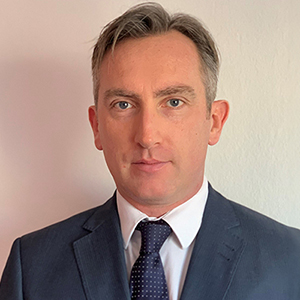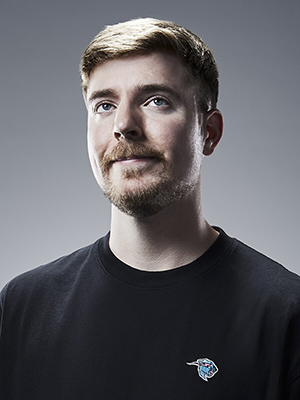Learning a new philanthropic approach from Mr. Beast


In the latest in a series of articles for CampdenFB, experienced family office professional Giles Graves suggests philanthropically-inclined wealth holders look to the methods of the phenomenally successful YouTuber…
Historic, billionaire, multi-generational families are often charitable and some have made philanthropy a professional service with teams of managers… But they should keep an open mind as to how it should be done and how to really help people at grassroots level.
I have a very simplistic view of philanthropy. If a charitable person wants to help cancer victims, they should go and hold some hands of people who are suffering from cancer. If someone wants to help mental health, they need to provide or fund counselling services. To help gambling addicts, someone should stand outside a betting shop with a sign saying “I help gambling addicts”. Before long, a customer will come out of that shop having lost and say they want help to stop. If anyone wants to help people in need, they should go and make sure they give those people what they need, directly. Only then do both parties get the full benefits of philanthropy.
Guess which philanthropic team has served 20,000,000 meals to people in need, given away $2.7 million in free clothes, 20,000 pairs of shoes to kids in Africa, rebuilt homes for tornado survivors, flew street kids to soccer world championships, performed 10,000 random acts of kindness, poor school supply drops, $3 million in aid to refugees, built wells in Africa, helped paralysed dogs run again, adopted an orphanage, paid for a free children’s hospital, brought water to Kenyan villages, helped 2,000 amputees walk again, built a town, given 100 kids surgery to smile, and 1,000 blind people surgery to see.

The answer is… 25 year old Youtuber, Mr Beast and his team of young assistants, all of whom are learning as they go.
Let us compare the established tradition of philanthropy in multi-generational wealthy families and the emerging influence of first-generation philanthropists.
Multi-generational wealthy families, such as the Grosvenors in Europe, epitomise a tradition of philanthropy that spans generations. Through the Westminster Foundation and led by the Dukes of Westminster past and present, they prioritise initiatives in education, healthcare, arts, and community development, reflecting a deep-seated commitment to social responsibility and the preservation of family values.
In Asia, the Ambani family serves as another prominent example of multi-generational philanthropy. Led by Mukesh Ambani, the family's philanthropic arm, the Reliance Foundation, plays a pivotal role in addressing social issues in India. With a focus on education, healthcare, and rural development, the foundation leverages the family's business success to positively impact Indian society, reflecting a commitment to making a lasting difference in the communities they serve.
Meanwhile, in Africa, the Mo Ibrahim Foundation stands out for its efforts to promote good governance and leadership across the continent. Established by Sudanese-British billionaire Mo Ibrahim and his family, the foundation awards the prestigious Ibrahim Prize for Achievement in African Leadership to former heads of state who have demonstrated exceptional leadership and governance. Through recognising and celebrating effective governance, the foundation aims to inspire positive change and foster development throughout Africa.
In South America, the Safra family, known for their substantial wealth derived from banking, has a longstanding tradition of philanthropy. Led by Joseph Safra, the family's philanthropic efforts focus on supporting education, healthcare, and social welfare programs, particularly in Brazil and beyond. With a dedication to improving the lives of underserved communities, the Safra family's philanthropy has made a significant impact in addressing pressing social challenges in the region.
In the Middle East, the Al Nahyan family of the United Arab Emirates (UAE) exemplifies a commitment to philanthropy and community development. Notable members of the family, such as Sheikh Mohammed bin Zayed Al Nahyan, the Crown Prince of Abu Dhabi, and Deputy Supreme Commander of the UAE Armed Forces, oversee various initiatives and foundations addressing a wide range of social, cultural, and humanitarian challenges both domestically and internationally.

In contrast to the established tradition of multi-generational wealth, first-generation philanthropists like Jimmy Donaldson (aka Mr. Beast) represent a newer, more dynamic force in the philanthropic landscape. Just to put things into perspective, Jimmy was born in 1998 and turns over $700 million each year with his YouTube channels. He is by no means inferior in wealth to these established family offices in terms of available cash and his liquid assets may in some years far exceed the amounts traditional Family Offices will be dealing with.
First-generation entrepreneurs like him are an enigma to established and traditional teams. Emerging from diverse backgrounds and propelled by personal experiences or entrepreneurial success, individuals like Jimmy leverage their platforms, resources, and creativity to drive immediate impact. Unencumbered by the legacies or structures of multi-generational wealth, first-generation philanthropists can be nimble, innovative, and deeply connected to their audiences, harnessing the power of social media and digital platforms to amplify their impact.
While multi-generational wealthy families typically operate within established frameworks and institutions, first-generation philanthropists are more inclined towards grassroots initiatives, direct giving, and hands-on involvement. For example, while the historic families may support large-scale projects through their foundations, the philanthropy of first-generation entrepreneurs like Mr. Beast often takes the form of viral challenges, fundraisers, and direct assistance to individuals in need.
Both approaches have their merits, contributing to a diverse philanthropic ecosystem encompassing a wide range of strategies, priorities, and impacts.
Furthermore, the motivations driving multi-generational wealthy families and first-generation philanthropists may differ. For multi-generational families, philanthropy may be rooted in duty, tradition, or legacy preservation.
For first-generation philanthropists, philanthropy is driven by personal values, social justice, or a desire to give back to communities that need helping, and they want to be on the front lines, giving.
Professional philanthropists should keep an eye on the philanthropic methods of first-generation entrepreneurs like Mr Beast. Maybe they will pick up some new ideas, get money closer to where it is needed, and have some fun in the process.






